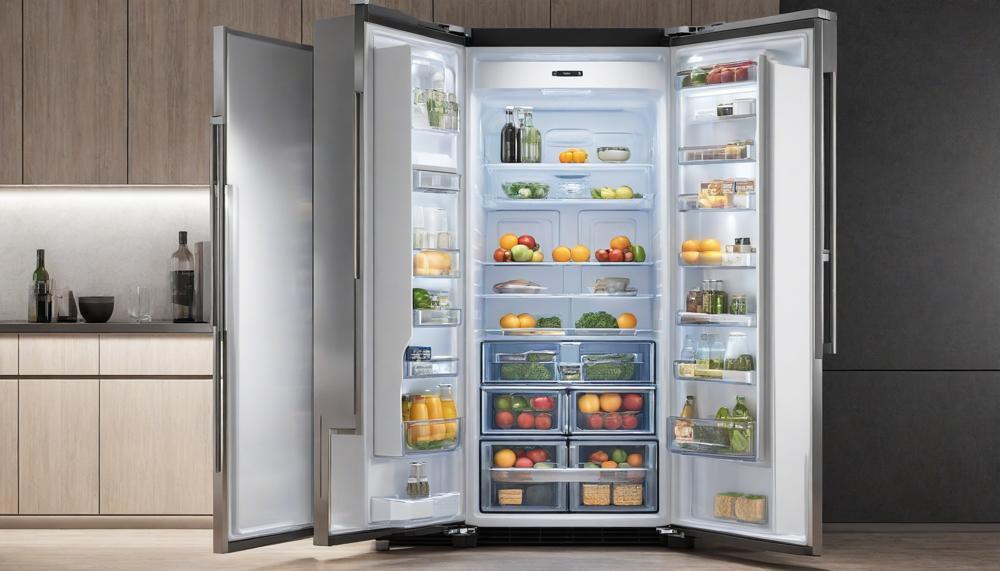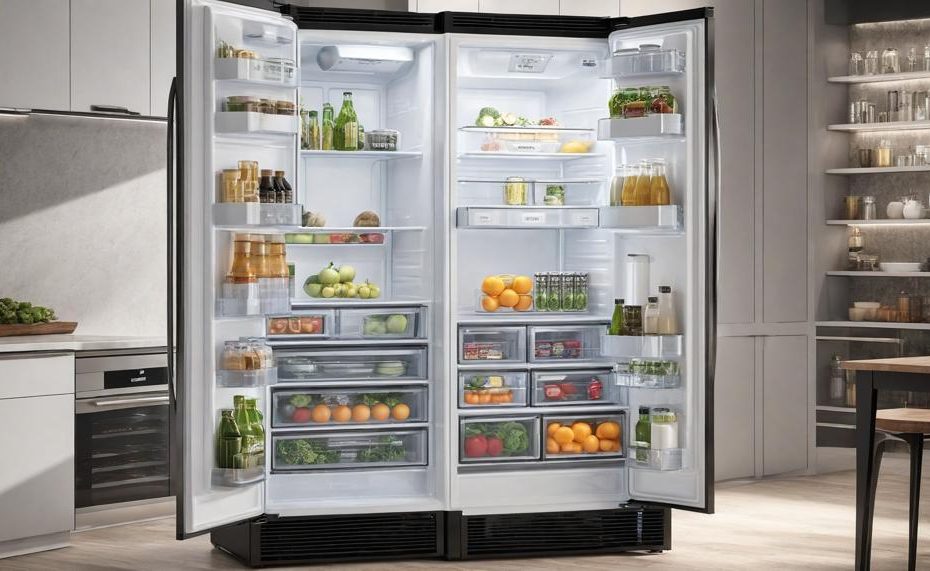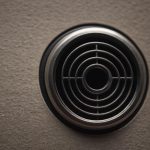A refrigerator can be stored without being used for up to 20 years, though this longevity hinges on specific conditions.
Over time, refrigerant leaks may occur, potentially shortening this period. Ensuring proper storage can help maximize the lifespan and functionality of your appliance.
Here are the key takeaways for storing a refrigerator safely:
- Maximum Storage Duration: Up to 20 years, though refrigerant leaks may develop over time.
- Used Refrigerators: If not sanitized before storage and left with the door closed, they can become hazardous waste in about a month.
- Storage Conditions: Store refrigerators upright and in a dry environment to prevent moisture buildup.
- Preparation Before Use: If manufacturer guidelines are unavailable, let the refrigerator stand upright for at least one day before using.
- Maintenance Tip: Always clean the refrigerator thoroughly before turning it on after a long period of storage.
Properly following these guidelines ensures that your refrigerator remains in good condition, ready to serve you whenever needed.
Contents
- 1 Factors Affecting Refrigerator Storage Duration
- 2 Preparing Your Refrigerator for Long-Term Storage
- 3 Cleaning and Emptying the Refrigerator
- 4 Securing and Protecting the Refrigerator
- 5 Temperature and Humidity Considerations
- 6 Regular Maintenance Checks and Inspections
- 7 Troubleshooting Common Issues after Storage
- 8 Conclusion
Factors Affecting Refrigerator Storage Duration
The main factors that affect how long a refrigerator can be stored without being used include the following:
| Climate Control | Storing the refrigerator in a climate-controlled environment is crucial. Extremes in temperature and humidity can damage internal components and lead to refrigerant leaks. Maintaining a stable, moderate temperature ensures the longevity of the stored appliance. |
| Cleanliness | Before storage, thoroughly clean and sanitize the refrigerator. Any leftover food particles or moisture can lead to mold growth and unpleasant odors. It is especially important if the refrigerator was used before storage. |
| Positioning | Store the refrigerator upright to prevent damage to the compressor and refrigerant lines. If it must be laid down, it should be kept upright for at least 24 hours before being turned on to allow the oils and refrigerants to settle back into place. |
| Dryness | Keep the refrigerator dry. Moisture buildup can cause rust and damage electrical components. Ensure the storage area is dry and consider placing moisture absorbers inside the refrigerator. |
| Safety | Ensure the storage area is safe from physical damage and pest infestations. A protected, enclosed space prevents accidents and external damage, ensuring the refrigerator remains in good condition. |
| Manufacturer’s Guidelines | If available, follow the manufacturer’s storage guidelines. These instructions are designed to maximize the lifespan of the appliance during periods of non-use. |
Additional Considerations
- Duration: While some refrigerators can be stored for up to 20 years, it is wise to periodically check for any signs of refrigerant leaks or other issues.
- Preparation for Use: Upon retrieval from storage, clean the refrigerator again and allow it to stand upright for at least 24 hours before turning it on.
Preparing Your Refrigerator for Long-Term Storage
Properly preparing your refrigerator for long-term storage involves several critical steps to ensure it remains in good condition and ready for future use. Follow these steps meticulously to avoid damage and maintain the appliance’s longevity.
| Step | Action | Details |
| 1 | Plan Ahead | Book a storage unit in advance and ensure it is clean, dry, and temperature-regulated. This is crucial to prevent any damage caused by moisture or extreme temperatures. |
| 2 | Clean Thoroughly | Empty the refrigerator completely and clean all surfaces with a mixture of baking soda and water. This helps eliminate any lingering odours and prevents mold growth. |
| 3 | Dry Completely | After cleaning, allow the refrigerator to dry thoroughly. Leave the doors open for several hours or use a fan to speed up the drying process. Moisture left inside can cause mold and mildew. |
| 4 | Secure Loose Parts | Remove and securely pack any loose parts such as shelves, drawers, and trays. This prevents them from shifting during transport and causing damage. |
| 5 | Use a Deodorizer | Place a deodorizer inside the fridge to keep it smelling fresh. Baking soda or commercially available fridge deodorizers are effective choices. |
| 6 | Leave Doors Slightly Open | Leave the refrigerator doors slightly ajar to allow air circulation and prevent moisture buildup. Use a wedge or a bungee cord to keep the doors propped open. |
| 7 | Transport Safely | When moving the refrigerator, keep it upright to avoid damaging the compressor. Use a dolly and secure the appliance with moving straps to prevent it from tipping over. |
| 8 | Climate-Controlled Storage | Store the refrigerator in a climate-controlled unit. Extreme temperatures can damage the appliance’s internal components and seals. |
| 9 | Periodic Checks | If possible, periodically check the refrigerator during its storage period to ensure it remains in good condition. This can help catch any potential issues early. |

Cleaning and Emptying the Refrigerator
To maintain a refrigerator’s efficiency and prevent food contamination, it should be cleaned and emptied once or twice a month. Regular cleaning helps avoid the buildup of bacteria, mould, and odours, ensuring a safe environment for your food.
Additionally, adhere to manufacturer guidelines, such as changing the filter regularly, to keep the appliance running smoothly.
Key Steps for Cleaning Your Refrigerator
| Step | Action | Details |
| 1 | Remove All Items | Take everything out, including shelves and drawers. |
| 2 | Discard Expired Food | Check expiration dates and dispose of any spoiled or old items. |
| 3 | Clean Shelves and Drawers | Wash with warm soapy water, rinse thoroughly, and dry completely. |
| 4 | Wipe Down Interior | Use a mixture of baking soda and water or a mild cleaner. Avoid abrasive sponges. |
| 5 | Replace Items | Organise food items, ensuring that perishable items are at the front. |
| 6 | Change Filters | Follow manufacturer guidelines to replace filters as needed. |
| 7 | Use a Deodorizer | Place an open box of baking soda or a fridge deodorizer to absorb odours. |
Securing and Protecting the Refrigerator
Securing and protecting a refrigerator during prolonged periods of non-use requires careful preparation to ensure it remains in good condition. Here are essential steps to take:
| Step | Action | Details |
| Cleaning and Deodorizing | Thoroughly clean all surfaces | Use baking soda and water, place a deodorizer inside |
| Securing the Doors | Leave doors slightly open | Secure with cords or straps |
| Using a Dolly | Move the fridge | Keep it upright to avoid compressor damage |
| Choosing Storage Location | Select a clean, dry unit | Avoid extreme temperatures |
| Preparing the Storage Area | Clear a designated spot | Ensure it’s a flat surface |
| Preventing Moisture and Mould | Insert moisture absorbers | Ensure good ventilation |
| Securing Electrical Components | Unplug and wrap power cord | Cover exposed electrical parts |
| Booking Storage Unit | Book in advance | Choose the safest option available |
Temperature and Humidity Considerations
When storing a refrigerator that is not in use, temperature and humidity play crucial roles in ensuring its longevity and preventing damage. Here’s how they impact the storage conditions:
Impact of Temperature
- Extreme Temperatures: Exposure to extreme cold or heat can damage the refrigerator’s components. Ideally, the storage area should maintain a consistent temperature between 10°C to 32°C (50°F to 90°F).
- Condensation Risk: Fluctuating temperatures can cause condensation inside the refrigerator, leading to mould growth and corrosion of internal parts.
Impact of Humidity
- High Humidity: If humidity levels exceed 50%, it can cause moisture buildup, which promotes mould and mildew growth. Additionally, high humidity strains the compressor, shortening its lifespan and increasing energy consumption when the fridge is back in use.
- Low Humidity: Very low humidity can cause rubber seals to dry out and crack, compromising the refrigerator’s efficiency.
Best Practices for Storage
| Factor | Recommended Condition | Why |
| Temperature | 10°C – 32°C (50°F – 90°F) | Prevents condensation, mould, and component damage |
| Humidity | Below 50% | Reduces moisture buildup, prevents mould, and protects the compressor |
| Location | Cool, dry place | Minimizes environmental stress on the appliance |
| Preparation | Thorough cleaning and door propping | Prevents mould and allows air circulation |
Regular Maintenance Checks and Inspections
To ensure your refrigerator remains in good condition while being stored unused for an extended period, regular maintenance checks and inspections are essential. Here’s a detailed guide to keep your appliance in top shape:
| Maintenance Task | Recommended Frequency | Details |
| Clean the Interior and Exterior | Every 3-6 months | Thoroughly clean the shelves, drawers, and door seals. Use a mild detergent and water, ensuring all surfaces are dry before closing the doors. |
| Check and Clean the Condenser Coils | Every 6 months | Dust and debris can accumulate on the coils, causing the fridge to overheat and work inefficiently. Use a vacuum or a soft brush to clean the coils. |
| Inspect Door Seals | Every 3 months | Ensure the door seals are intact and not cracked. Replace them if they are damaged to prevent cold air from escaping. |
| Monitor Humidity and Temperature Levels | Monthly | Keep the storage area at a temperature between 10°C to 32°C (50°F to 90°F) and humidity below 50%. Use a hygrometer and thermometer to monitor these levels. |
| Ensure Proper Ventilation | Monthly | Check that the refrigerator is placed away from walls or other obstructions, allowing at least a few inches of space for air circulation. |
| Change Water Filter (if applicable) | Every 6 months | If your refrigerator has a water dispenser or ice maker, replace the water filter to maintain water quality and hygiene. |
| Check for Pests and Mold | Monthly | Inspect for any signs of pests or mold, particularly in the door seals and hidden corners. Clean immediately if found. |
| Run the Refrigerator Periodically | Every 1-2 months | Plug in and run the refrigerator for a few hours to keep the components in working order and prevent any mechanical issues. |
| Inspect for Leaks | Every 3 months | Check the drip pan and defrost drain for any signs of leaks or blockages. Clean and repair as needed. |
| Cover and Protect | Once, during storage setup | Use a breathable cover to protect the refrigerator from dust and dirt while allowing air circulation to prevent moisture buildup. |
Troubleshooting Common Issues after Storage
Storing a refrigerator for an extended period can lead to several common issues. Here’s a breakdown of these problems and their solutions:
| Problem | Description | Solution |
| Mold and Mildew Growth | Moisture buildup can lead to mold and mildew inside the refrigerator. | Clean the interior with a mixture of baking soda and water. Leave the doors open for a few hours to air it out. Regularly check and wipe down any damp spots. |
| Freezer Burn | Frozen foods may develop freezer burn, affecting their quality and taste. | Ensure proper temperature settings and avoid overloading the freezer. Use airtight containers or vacuum-sealed bags for storing food. |
| Malfunctioning Components | Components like the compressor or thermostat may break or malfunction after prolonged storage. | Call a professional technician to inspect and repair any faulty parts. Regular maintenance can prevent such issues. |
| Clogged Condenser Coils | Dust and debris can clog condenser coils, leading to inefficient cooling. | Clean the condenser coils with a vacuum or a soft brush to remove any buildup. This should be done every six months to ensure optimal performance. |
| Strange Noises or Odors | Unusual sounds or smells can indicate underlying issues or residue buildup. | Identify the source of the noise or odor. Clean the drip pan and check for any trapped food or debris. If noises persist, consult a professional. |
Conclusion
Storing a refrigerator unused for extended periods requires careful consideration to ensure its longevity. Properly maintained, a refrigerator can remain viable for up to 20 years. However, several factors play a crucial role in this.
The key to successful storage lies in a controlled environment. Keeping the refrigerator in a stable, climate-controlled setting prevents internal damage from temperature extremes and humidity, which can otherwise lead to refrigerant leaks and component failure. Additionally, thorough cleaning before storage is essential to prevent mold growth and unpleasant odors.
Positioning is another critical factor. Always store the refrigerator upright to protect the compressor and refrigerant lines from damage. If horizontal storage is unavoidable, allow the unit to stand upright for at least 24 hours before use to let the refrigerant settle.
Moreover, maintaining a dry environment is vital to avoid rust and other moisture-related issues. Regular checks and minor maintenance can also extend the appliance’s life.
By adhering to these guidelines, you can ensure your refrigerator remains in excellent condition, ready to function whenever needed.





